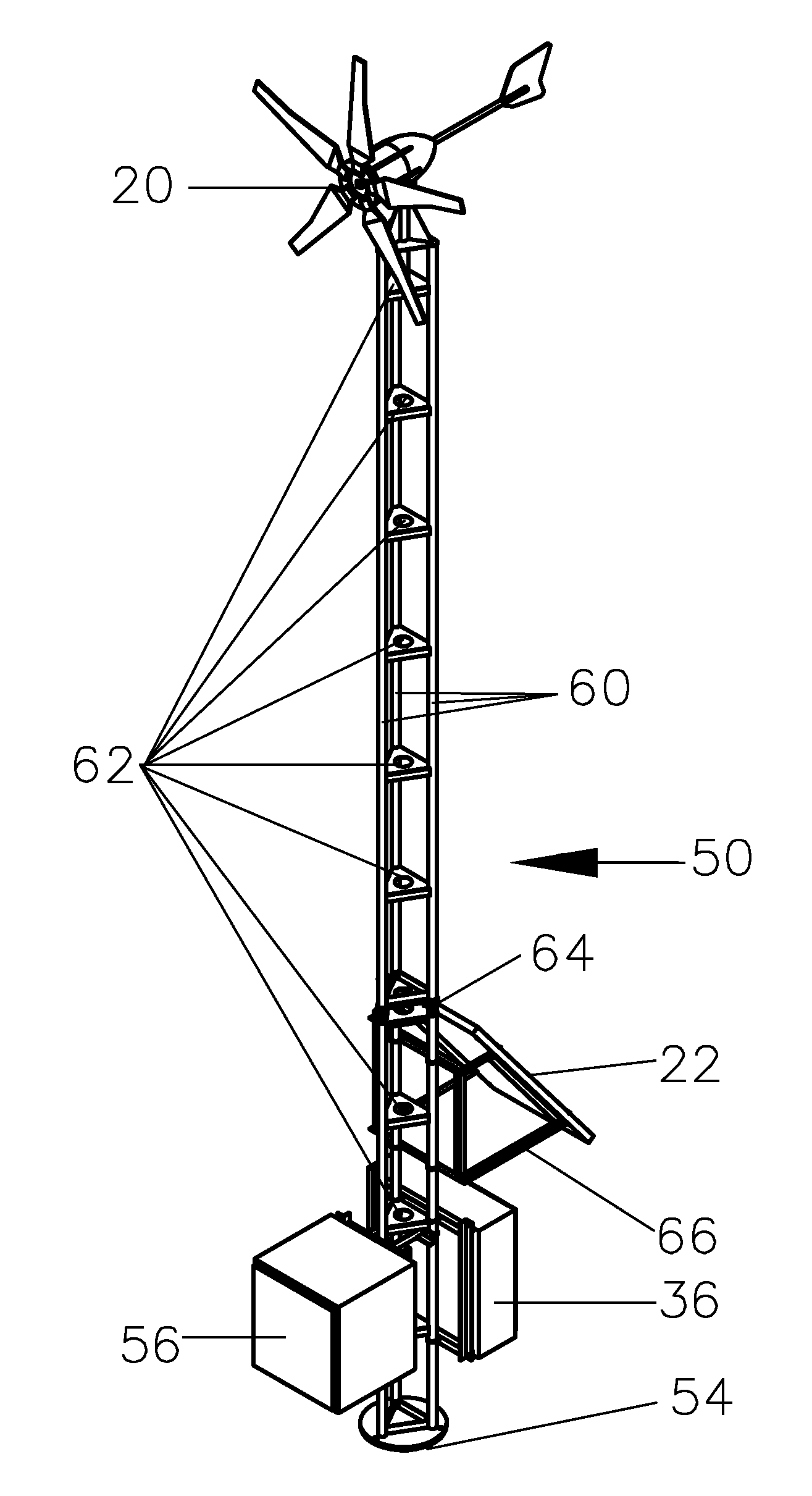Wind & solar powered heat trace with homeostatic control
a technology of solar energy and heat trace, which is applied in the directions of emergency power supply arrangement, safety/protection circuit, transportation and packaging, etc., to achieve the effect of preventing them from freezing, and maximizing the use of stored energy
- Summary
- Abstract
- Description
- Claims
- Application Information
AI Technical Summary
Benefits of technology
Problems solved by technology
Method used
Image
Examples
Embodiment Construction
[0032]The present invention comprises one or more sources of energy input (E(in)) through a novel homeostatic control system with output (E(out)) to one or more energy-consuming components. In the HTS, E(in) is generated from wind and sunlight by an aerogenerator and at least one solar panel and stored in a bank of deep-cell batteries, and may be consumed by at least one heat trace section used to prevent equipment from freezing. The control system maintains homeostasis when E(in)=E(out), and the batteries in the bank are fully charged.
[0033]As in all homeostatic control systems, the control system for the present invention has a variable (V) being controlled, and at least three independent components for regulating it. The receptor, R monitors environmental changes and sends information about the environment to a control center, C. C sets the range homeostasis and sends information to an effector, F. If V moves out of its homeostatic range, F attempts to implement a correction to r...
PUM
 Login to View More
Login to View More Abstract
Description
Claims
Application Information
 Login to View More
Login to View More - R&D
- Intellectual Property
- Life Sciences
- Materials
- Tech Scout
- Unparalleled Data Quality
- Higher Quality Content
- 60% Fewer Hallucinations
Browse by: Latest US Patents, China's latest patents, Technical Efficacy Thesaurus, Application Domain, Technology Topic, Popular Technical Reports.
© 2025 PatSnap. All rights reserved.Legal|Privacy policy|Modern Slavery Act Transparency Statement|Sitemap|About US| Contact US: help@patsnap.com



